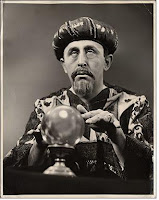From procurement function to sourcing function
Procurement as a business discipline has matured over the past few decades. The times are over of procurement as an intermediary functions that records agreements with suppliers and supervises their fulfilment. That is too limited a view in today’s business environment, where management is confronted with a multitude of issues impacting on the role and responsibilities of procurement.
It has been recognised that an effective and efficient procurement function can significantly contribute to business’ bottom line: competitive financial result. What’s more, many organisations feel the need to improve their relationships with suppliers in order to be better able to reduce costs, improve quality, increase flexibility and boost innovation in order to survive.
Especially in these challenging economic times where outsourcing is used as a means to cut cost quickly is it necessary to move away from the traditional role of procurement as an intermediary functions that records agreements with suppliers and supervises their fulfilment. That is too limited a view in today’s business environment, where management is confronted with a multitude of issues impacting on the role and responsibilities of procurement.
Procurement looks traditionally at sourcing as buying services and products from a ratter limited perspective by defining a objective (e.g. less 20% cost), input (e.g. an existing supply contract), process (e.g. renegotiation) and output (e.g. a new supply contract). This is called the system theory and pays little or no attention to the effects of (irrational) human behaviour from those who are involved in the process.
A strategic sourcing function adds various elements to the system theory by incorporating various ‘soft’ elements including conflict management, principles of game theory and decision making theories. As a result is the focus of sourcing in contrast to purchasing more on the inherent conflicts of interests between buyer and seller and their dilemma’s.
Furthermore does (strategic) sourcing include the following elements into the decision making process:
It has been recognised that an effective and efficient procurement function can significantly contribute to business’ bottom line: competitive financial result. What’s more, many organisations feel the need to improve their relationships with suppliers in order to be better able to reduce costs, improve quality, increase flexibility and boost innovation in order to survive.
Especially in these challenging economic times where outsourcing is used as a means to cut cost quickly is it necessary to move away from the traditional role of procurement as an intermediary functions that records agreements with suppliers and supervises their fulfilment. That is too limited a view in today’s business environment, where management is confronted with a multitude of issues impacting on the role and responsibilities of procurement.
Procurement looks traditionally at sourcing as buying services and products from a ratter limited perspective by defining a objective (e.g. less 20% cost), input (e.g. an existing supply contract), process (e.g. renegotiation) and output (e.g. a new supply contract). This is called the system theory and pays little or no attention to the effects of (irrational) human behaviour from those who are involved in the process.
A strategic sourcing function adds various elements to the system theory by incorporating various ‘soft’ elements including conflict management, principles of game theory and decision making theories. As a result is the focus of sourcing in contrast to purchasing more on the inherent conflicts of interests between buyer and seller and their dilemma’s.
Furthermore does (strategic) sourcing include the following elements into the decision making process:
- entry and exit from supplier markets,
- capacity development,
- selection and management of sources of supply,
- innovation and,
- cost development over a long term.



Comments
Post a Comment